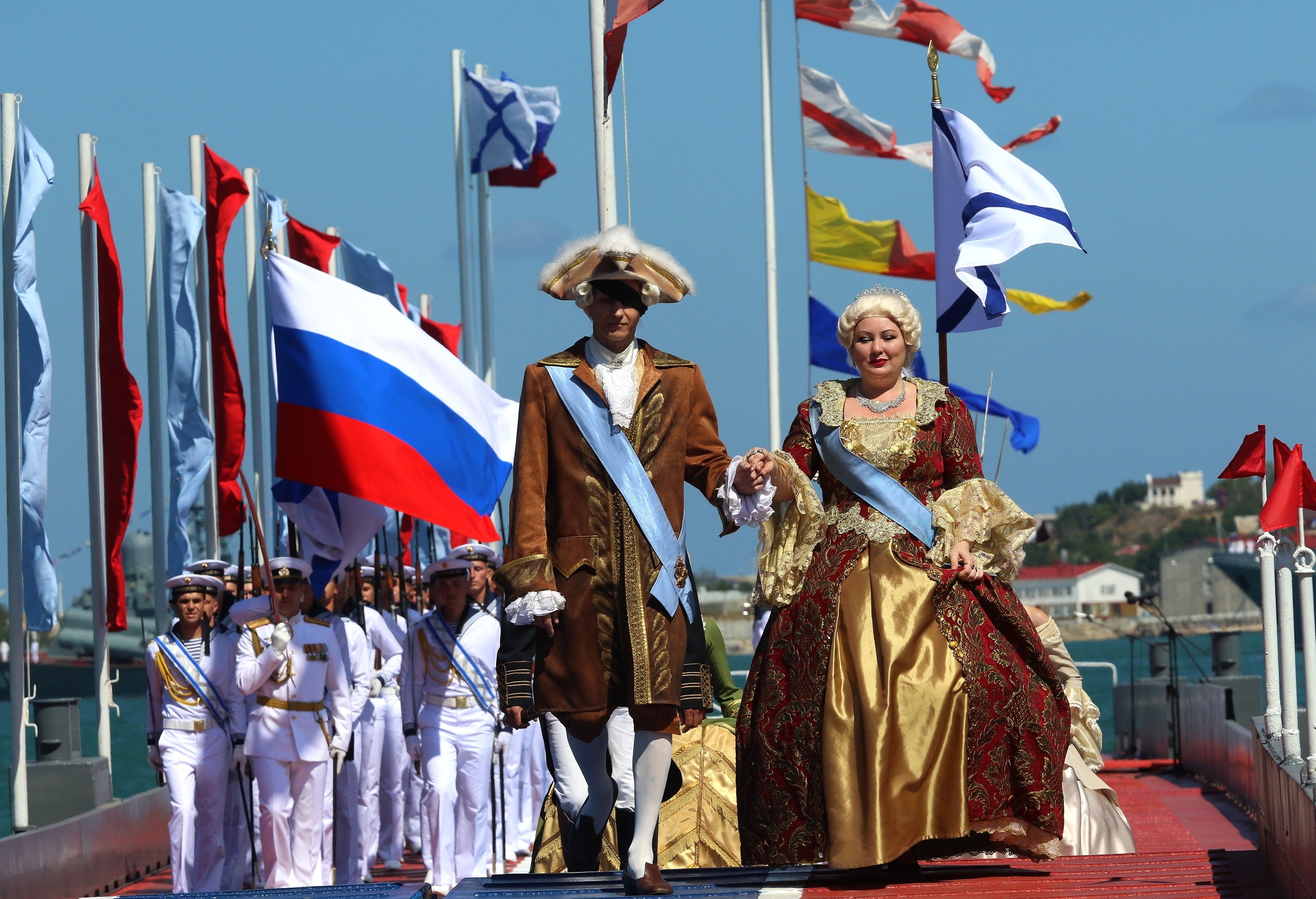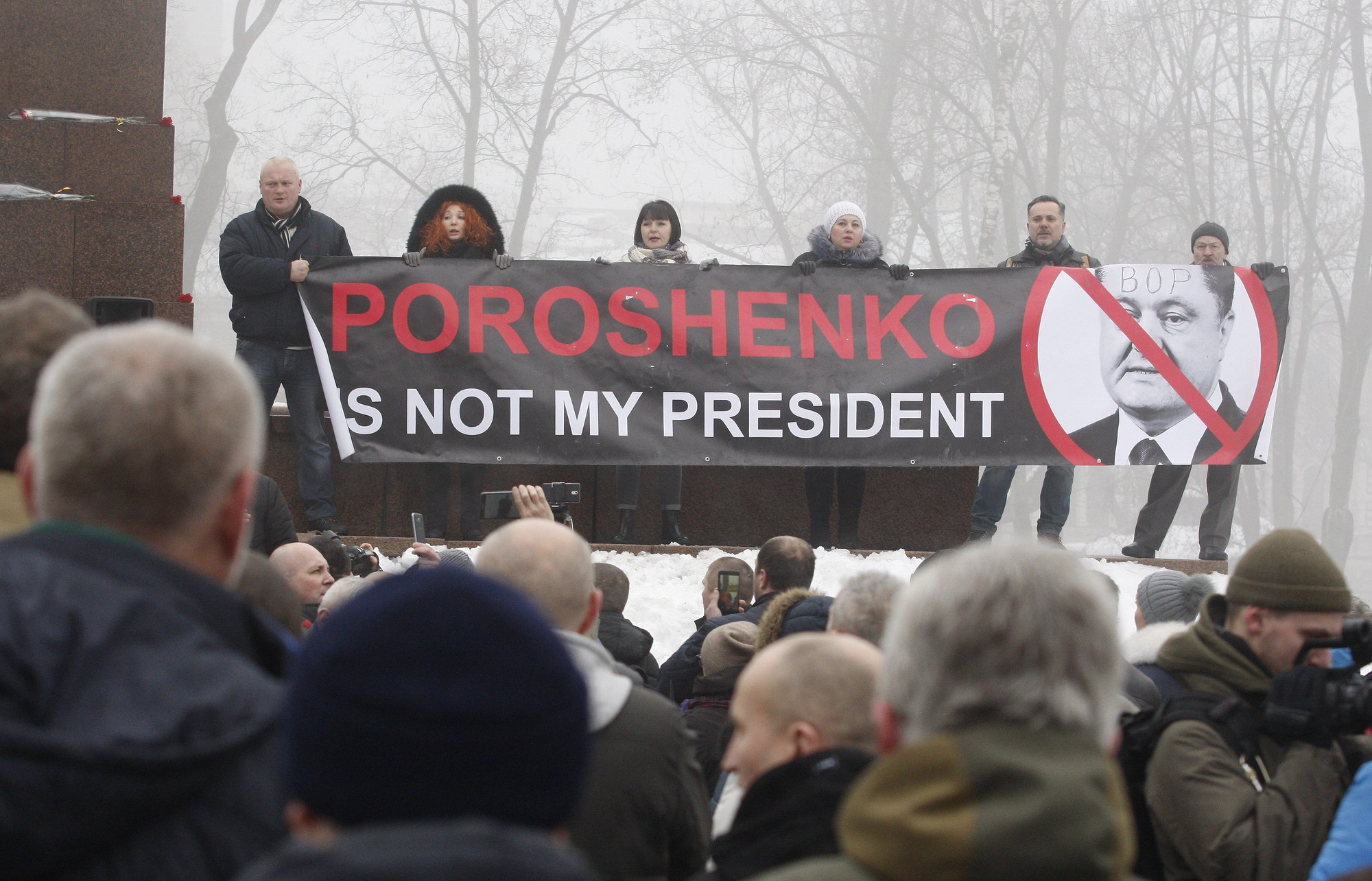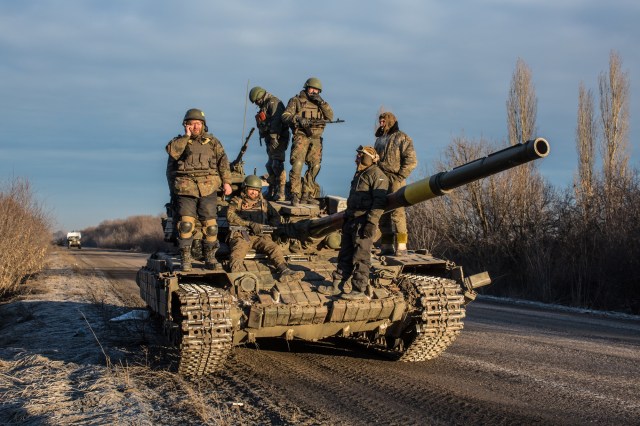Ukrainian forces retreating, having been surrounded by pro-Russian rebels. (Credit: Brendan Hoffman/Getty Images)

This is the sixth in a series of articles looking at people, places, institutions or subject areas that the news media does not serve well. Once the series is complete, we’ll be polling UnHerd subscribers – asking which UnHerd author they most agree with.
There is a war being fought in Europe that goes largely unremarked. Not a culture- or a cyber- or a cold war, but a shooting war. Not a shooting war fought with lone snipers and suicide bombers, but with tanks and artillery. Not in some unviable Balkan polity, residue of the breakup of Former Yugoslavia, but in the largest country entirely within Europe[1. Roughly the area of Texas, with a little less than twice the population – 45million]. Not a civil war, but a war of aggression by a foreign power using indigenous militias, as well as its own forces. Indeed, one in which the foreign power has by the bomb and the ballot box already annexed 5% of the country and has designs on two more regions which it currently recognises in effect as “independent peoples’ republics”, and where its own currency is used in preference to the central bank’s.
Welcome to Ukraine, where east has met west both physically and culturally for two millennia. Indeed, some scholars hold that the word “Ukraine” means “borderland” – and is therefore why it used to be called “the Ukraine.”
A green but not always pleasant land
Borderlands are historically associated with lawlessness and conflict, and in the lifetime of – until her death in November last year, aged 117 – Ukraine’s oldest person, Khrystyna Nahorna, the country has seen little peace.
When Mrs Nahorna was 14, and Ukraine was a part of Tsarist Russia, there was fierce fighting in Galicia, in what was then part of the Austro-Hungarian Empire but is now in western Ukraine. The Battle of Lemburg (now Lviv) saw three Austro-Hungarian armies clash with four Russian, which began with Austrian successes but ended with a resounding Russian victory that pushed the Austrians back to the Carpathian Mountains.
After four years of fighting, when Mrs Nahorna was 18, the Bolsheviks, who had overthrown the Tsar the previous year, sued for peace. In the process, the Germans invaded and occupied most of Ukraine. When, in turn, the Germans sued for peace with the Western Allies later that year, November 1918, and civil war in Russia spread, the country became independent. However, with the ultimate victory of the Bolsheviks over the “White Russians”, Ukraine was incorporated in the new Union of Soviet Socialist Republics.
In the early 1930s Mrs Nahorna, along with most of her fellow-countrymen, faced starvation as a direct result of Stalin’s (at best) indifference, or (at worst) genocidal policy. Up to 10 million Ukrainians died – in the country known proverbially as the breadbasket of Eastern Europe – in the Holodomor (“death by hunger”)[2. See Red Famine: Stalin’s War on Ukraine, Anne Applebaum (2017)].
Much of Ukraine was laid waste during the Second World War, principally by the Germans, but also in the fighting between the Red Army, with whom Mrs Nahorna’s second husband was killed, and Ukrainian nationalists who welcomed the Nazi “liberation”.

In 1954, Crimea, a Russian oblast (autonomous province), was presented by the Presidium of the USSR’s Supreme Soviet to Ukraine, ostensibly to mark the three-hundredth anniversary of Ukraine’s fealty to Tsar Aleksei I of Muscovy (a curious notion for a country that had liquidated the Imperial family in 1918). More likely it was because the great naval base at Sevastopol was crucial to the USSR’s strategic reach, and the “gift” might bind in Ukraine even closer to the Soviet Union.
The end of Stalin’s imperium
Ukraine, along with most of the rest of the old socialist republics, gained independence after the collapse of the USSR in 1991. Rapid economic decline and runaway inflation followed. Ukraine’s first president, the former Communist Party leader Leonid Kravchuk, was forced to resign in 1994 and his successor, Leonid Kuchma, the former prime minister until his resignation over Kravchuk’s economic policies, oversaw a steady economic recovery.
He was still held to be conceding too much to Russian economic interests, however, as well as fostering cronyism and continuing to impose media censorship. Kuchma’s attempt to rig the 2004 elections led to the “Orange Revolution” (orange the colour of the main opposition movement): mass protests and a revolt by state media prompted an offer of mediation by the EU, and a re-run of the presidential election, which was then won by the pro-Western Viktor Yushchenko backed by a loose alliance of anti-Kuchma groups.
Yushchenko pressed ahead with democratic reform, but his moves towards Nato and EU membership began to founder. Public opinion was still too divided. (And, somewhat belatedly, Nato members began to realise that, given the purpose of the Alliance – to hold the Russians in check – expansion might be counter-productive.) Rivalry with his prime minister, the economist-engineer Yulia Tymoshenko, became bitter, and as a result their former opponent in the Orange Revolution, Viktor Yanukovych, won the 2010 presidential election.
Yanukovych re-oriented foreign and trade policy towards Russia, re-imposed media control, and locked up many an opponent, notably Tymoshenko.
However, Yanukovych’s decision in 2013 to drop the tentative EU trade proposals brought mass protests again which in early 2014 brought down the government amid escalating chaos and violence. President Putin now saw his chance both to reincorporate Crimea in the Russian Federation and to exploit separatist sentiment in Eastern Ukraine.

With the election of the pro-western Petro Poroshenko as president of Ukraine in May 2014, however, and elections later that year which returned a firmly western-leaning parliament, fighting broke out in the Donetsk and Luhansk oblasts (commonly called the Donbas – the basin of the Donets River) as the Ukrainian army battled with the separatists and Russian troops.
Since then, at least 10,000 Ukrainians have died in the fighting, and some 25,000 have been wounded. The Ukrainian army has suffered over 12,000 casualties, including nearly 2,500 killed in action. Russia has established two army corps with a total manpower of nearly 40,000 within the occupied territories, yet all unacknowledged – disguised even. At various times Russia has had upwards of 700 main battle tanks, 1,300 armoured fighting vehicles and 1,000 artillery pieces, including multiple-launch rocket systems, in Eastern Ukraine.
At the same time, Russian forces in Crimea now number more than 30,000.
When I asked the Russian defence attaché in London about these numbers at dinner last year, he said categorically that there were no Russian troops in Ukraine, and that those that were in Crimea – “now part of the Russian Federation” – it was by the will of the people of Crimea expressed freely in a referendum. So categorical in his reply was he that I really thought he might believe it was true.
Three years ago, a study by the Washington think-tank the Atlantic Council concluded starkly:
“Russia is at war with Ukraine. Russian citizens and soldiers are fighting and dying in a war of their government’s own making. Russian President Vladimir Putin continues to deny Russian involvement in the fighting, but the evidence is overwhelming and indisputable.”
Russian casualties have not been light either, though precise numbers are impossible to establish. The OSCE’s Special Monitoring Mission in the Donbas has consistently reported vehicles travelling from Ukraine to Russia bearing the code “Cargo 200”, indicating that a vehicle carries dead bodies. There were, according to some analysts, more than 6,000 unaccountable deaths among Russian soldiers in 2014 and 2015.
What next for this war-torn extremity of Europe?
Kiev appears to have written off the population of the two self-proclaimed republics, severing transport and telecommunication links and halting payment of pensions and welfare, closing down the banking system and cutting all commercial ties. Instead it is training its army (with considerable British help) to resist further incursions, and even to prepare to recover lost ground.
Meanwhile, though, the rest of Ukraine is beginning to feel the pinch of the economic dislocation. The EU is refusing credit extensions because of corruption, and the IMF has recently refused funding because of failure to introduce reforms. Next year Ukraine is due to start repaying earlier loans: some $14 billion a year – half the state budget.
President Poroshenko and his government are becoming deeply unpopular. In such circumstances, politicians can see war as politically advantageous. Putin would win if he chose to fight, but at great cost. And a Pyrrhic victory might just be worse than conceding ground. Either way, there would be consequences for the international order.
Little of this reaches our screens and newsprint. First-hand reporting, and especially filming, is not as easy as in, say, Syria, where the country’s borders are porous and the fighting patchwork. Sixty per cent of the separatist-held Donbas is bordered by Russia, and the entry points from Ukraine are closed. Eastern Ukraine is in fact hugely dangerous for observers.
Yet besides this war’s continuing human cost, there are two reasons why it must not be treated as “a quarrel in a far away country between people of whom we know nothing”[3. Neville Chamberlain, in 1938, describing the Nazi seizure of the German-speaking border areas of Czechoslovakia.].
First, Ukraine, the largest country wholly within Europe, is still an immature democratic polity. Its stability has been undermined – possibly critically – by nearly four years of war. No good can come of instability in a country as large as Ukraine.
Secondly, Russia’s war in the Donbas is a test of the West’s (in particular the EU’s and Nato’s) resolve to stand up to Putin’s attritional tactics. Because Ukraine is not a Nato member, the media can perhaps rationalise its lack of coverage, for there is no risk of Article V being invoked.[4. Collective security, “An attack against one is an attack against all.”] This is a mistake, however, because it is the very ambiguity of Russia’s so-called hybrid warfare[5. There is no agreed definition of hybrid warfare – “full spectrum” is another term – but in essence it is a strategy that blends political, conventional, irregular and cyber warfare with other methods of influence, such as fake news, diplomacy and foreign electoral intervention.] that makes it difficult to be categorical; we become accustomed to things which cannot with certainty be categorised as acts of war, but which are nonetheless warlike acts.
Putin’s strategic aim is to prise-apart Nato; and over time, the “hybrid” approach is enervating and corrosively effective. No matter how much publicity is given to the current Nato reassurance missions in the Baltic States and Poland, for example, the lack of publicity given to Eastern Ukraine – where, as far as Putin is concerned, the action really is – subtly undermines those missions.
The events in my home town of Salisbury these past weeks, which No 10 and Nato have said cannot be plausibly ascribed to other than the Russian state (and therefore to its president), may just remind the media of the new “Great Game” that Putin is playing.
It’s time to turn the spotlight onto Eastern Ukraine.










Join the discussion
Join like minded readers that support our journalism by becoming a paid subscriber
To join the discussion in the comments, become a paid subscriber.
Join like minded readers that support our journalism, read unlimited articles and enjoy other subscriber-only benefits.
Subscribe